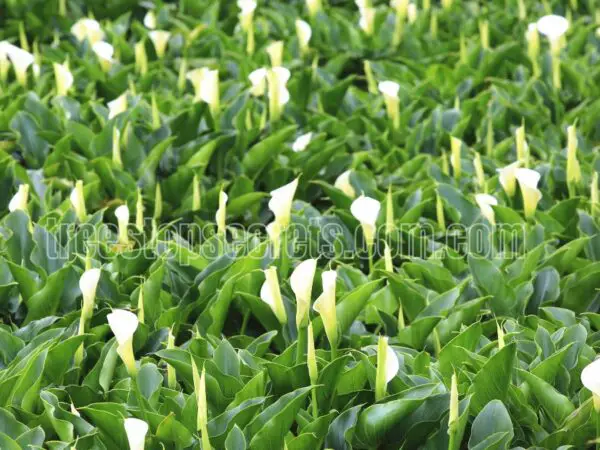Several cymbidiums, including stunning flower options, are possible cymbidiums that can bloom and brighten any space. Caring for cymbidium orchids is essential to keep them healthy, vibrant, and in bloom. These wonderful orchids thrive with the right light, water, and temperature. Understanding their needs, like those of a flower, can make all the difference in their growth, whether it be a miniature cymbidium or an indoor cymbidium.
Regular feeding and proper potting techniques for the cymbidium half moon flower also play a crucial role. With a little effort, you can enjoy their breathtaking flower blooms year after year. This guide will cover everything you need to know about caring for cymbidium orchids. You'll learn tips to keep them thriving and looking their best. Get ready to transform your plant care routine and impress everyone with your green thumb!
Key Takeaways
-
Ensure your cymbidium orchids get bright, indirect light to thrive; avoid direct sunlight that can scorch the leaves.
-
Maintain a stable temperature between 65-75°F (18-24°C) and provide humidity levels around 50-70% for optimal growth.
-
Water your orchids regularly, allowing the potting medium to dry slightly between waterings to prevent root rot.
-
Feed your cymbidium orchids with a balanced fertilizer every two weeks during the growing season to encourage healthy blooms.
-
Repot every couple of years in fresh orchid mix to provide adequate drainage and room for growth.
-
Regularly check for pests like aphids or scale; treat infestations promptly to keep your orchids healthy.
Light and Shade
Optimal Light Levels
Cymbidium orchids thrive in bright but diffuse light. Position them near windows that receive indirect sunlight. This helps the plants grow strong and healthy. Leaf color is a good indicator of light levels. Dark green leaves show that the plant receives enough light. If the leaves turn yellow, it may be getting too much shade.
Adjusting light exposure is crucial as seasons change. In winter, Cymbidiums may need more light due to shorter days. Move them closer to windows or use grow lights if necessary. During summer, ensure they are not exposed to direct sunlight for long periods.
Managing Shade
Managing shade is essential for these orchids. Use sheer curtains or blinds to filter harsh sunlight indoors. This softens the light while still providing brightness. Outdoors, look for areas with indirect light. Protect your plants from intense afternoon sun, which can cause damage.
Regularly rotating the plants also helps. This ensures all leaves receive equal light distribution. It prevents one side from becoming weaker than the other. Regular checks on their positioning can lead to healthier growth overall.
Seasonal Light Changes
Tracking the sun's path is important for adjusting plant placement. As seasons shift, so does the angle of sunlight. In spring, gradually increase light exposure to encourage growth. Start by moving plants to brighter spots for a few hours each day.
In late summer, reduce light intensity to prevent leaf burn. Too much direct sunlight can harm the orchid’s delicate leaves. Monitor how your plants respond during these changes for best results.
Temperature and Humidity
Ideal Temperature Range
Cymbidium orchids thrive within specific temperature ranges. Daytime temperatures should stay between 65°F to 75°F (18°C to 24°C) for optimal growth. This range supports photosynthesis and overall health. At night, temperatures need to drop. Keeping them around 55°F to 60°F (13°C to 16°C) encourages flowering. Sudden temperature changes can stress the plant. Stress may lead to poor growth or even flower loss.
Maintaining stable temperatures is crucial. Avoid placing orchids near heating vents or air conditioning units. These areas can create drafts that disrupt the ideal conditions. Consistent temperatures help the plant adapt and flourish.
Managing Humidity
Humidity plays a vital role in the care of Cymbidium orchids. Aim for humidity levels between 40% to 70% for healthy growth. Low humidity can lead to dry leaves and poor blooms. A humidifier can help maintain these levels indoors. Alternatively, place a tray filled with water near the plants. The evaporation from the water increases moisture in the air.
Misting the leaves is another effective method. Regularly misting during dry seasons helps enhance moisture levels around the plant. However, avoid over-misting, as it can lead to fungal issues. Monitor your orchids regularly to ensure they receive adequate humidity.
Seasonal Temperature Adjustments
Seasonal changes require adjustments in care for Cymbidium orchids. In spring, gradually acclimate them to outdoor temperatures. Start by placing them outside for a few hours each day, then increase exposure time over several days. This gradual introduction helps prevent shock.
As fall approaches, protect plants from cold drafts and sudden drops in temperature. Bring them indoors if nighttime temperatures fall below the ideal range. Indoor heating systems in winter can cause excessive dryness. Use a humidifier or place water trays nearby to combat this issue.
Monitoring temperature and humidity is essential throughout the year. Healthy Cymbidium orchids depend on consistent care during seasonal changes.
Watering
Frequency of Watering
Watering cymbidium orchids is crucial for their health. Water regularly during the active growth season. This typically occurs in spring and summer. During this time, keep the potting medium moist but not soggy.
Reduce watering frequency in fall and winter. The plant enters dormancy during these months. Check the top inch of the potting mix before watering. If it feels dry, it’s time to water again. This helps avoid over-saturation.
Best Watering Techniques
Water thoroughly to ensure the roots receive enough moisture. Use room temperature water to prevent shocking the roots. Cold water can stress them, leading to poor growth.
Consider using rainwater or distilled water for better results. These options are free from harmful minerals found in tap water. They help prevent mineral buildup, which can harm the plant over time.
Signs of Overwatering
Look for signs that indicate overwatering. Yellowing leaves often appear when a plant receives too much moisture. Wilting can also be a sign of excessive watering.
Check for root rot by inspecting the roots. Healthy roots should be firm and white. If they feel mushy or brown, this indicates overwatering has occurred.
Monitor the potting mix as well. Consistently soggy conditions suggest a need for less frequent watering. Adjust your routine based on these observations to maintain healthy orchids.
Feeding
Choosing Fertilizers
Select a balanced fertilizer designed for orchids. These fertilizers contain the right mix of nutrients that support healthy growth. Slow-release fertilizers work well because they provide nutrients gradually. This method ensures that your cymbidium orchids receive essential elements over time.
Avoid high-nitrogen fertilizers. They can cause excessive leaf growth but may reduce flowering. Orchids need blooms to thrive and show off their beauty. Choosing the right type of fertilizer is crucial for achieving the best results.
Feeding Schedule
Fertilize your cymbidium orchids every 2-4 weeks during their growing season, which runs from spring to early fall. This regular feeding helps the plants grow strong and vibrant. Reducing the frequency to once a month in winter is important when growth slows down. During this period, the plants conserve energy and require fewer nutrients.
Always follow package instructions for dosage. Over-fertilizing can lead to nutrient burn, damaging the roots and leaves. The right amount will keep your orchids healthy without causing harm.
Signs of Nutrient Deficiency
Recognizing signs of nutrient deficiency is key to keeping cymbidium orchids healthy. Yellowing leaves often indicate a nitrogen deficiency. If you notice this, reassess your fertilizer choice or schedule.
Stunted growth or small flowers may suggest a phosphorus shortage. Phosphorus supports root development and blooming, so it’s vital for your plants' health.
Dark green foliage with poor blooming points towards potassium deficiency. Potassium is essential for flower production and overall plant vigor. Addressing these deficiencies quickly can help restore your orchids to good health.
Potting
Selecting Pots
Choose pots with drainage holes. This feature prevents water accumulation. Waterlogged roots can lead to decay. Clay or ceramic pots are ideal. They allow better air circulation. Good airflow helps the roots breathe. The size of the pot matters too. It should be large enough for root growth but not excessively big. A pot that is too large can hold too much moisture.
Best Potting Mix
Use a well-draining orchid mix. A mix containing bark, perlite, and sphagnum moss works well. These materials provide the right balance of moisture and drainage. Regular potting soil retains too much moisture for Cymbidium orchids. This excess moisture can harm the plant's health. Pre-mixed orchid potting media is also a good choice. It offers convenience and effectiveness for busy gardeners.
Repotting Steps
Repot Cymbidium orchids every 1-2 years. This process refreshes the potting mix and promotes healthy growth. Start by gently removing the plant from its pot. Be careful not to damage the roots during this step. Inspect the roots closely after removal. Trim any dead or rotting roots before placing the orchid in fresh mix. This action encourages new growth and keeps the plant healthy.
Taking care of your Cymbidium orchids involves proper potting techniques. Following these guidelines ensures your plants thrive indoors. Healthy orchids will reward you with beautiful blooms.
Pest Control
Common Pests
Cymbidium orchids face threats from various pests. Aphids, mealybugs, and spider mites are the most common culprits. Aphids are small, green insects that suck sap from the leaves. Mealybugs appear as white, cotton-like masses on stems and leaves. Spider mites are tiny and create fine webs on the plant.
Regular inspections are crucial. Check leaves and stems for any signs of these pests. Look for discoloration or wilting. These pests can weaken your orchids significantly. They hinder blooming and overall growth. Early detection is key to keeping your plants healthy.
Natural Pest Solutions
Organic treatments can effectively manage pest infestations. Insecticidal soap is a popular choice. It suffocates pests upon contact. Neem oil is another great option. It disrupts the life cycle of many pests.
Consider introducing beneficial insects into your garden. Ladybugs are excellent at controlling aphid populations naturally. They eat aphids and help maintain balance in your garden ecosystem.
Cleaning the leaves regularly helps too. Use a damp cloth to wipe down the foliage. This simple action removes dust and deters pests from settling on your plants.
Preventative Measures
Prevention is better than cure when it comes to pests. Good air circulation around your Cymbidium orchids minimizes pest attraction. Position plants where they can breathe easily without overcrowding.
Quarantine new plants before adding them to your collection. Keep them separate for a few weeks to ensure they don’t carry any pests. This practice helps prevent infestations from spreading.
Regular cleaning of pots and tools is essential as well. Pests can hide in dirt or debris left on gardening equipment. Clean tools after each use to eliminate potential pest habitats.
Blooming Issues
Encouraging Blooms
Cymbidium orchids need adequate light to thrive. They prefer bright, indirect sunlight. Too little light can stop them from blooming. Temperature variations also play a role. A drop in temperature at night can stimulate flower spikes. Aim for daytime temperatures between 65°F and 75°F. At night, temperatures should be around 50°F to 60°F.
Fertilization is important during the growing season. Use a balanced orchid fertilizer every two weeks. This helps support bloom development. Make sure the plant isn’t root-bound. A cramped pot can inhibit flowering. Repotting every couple of years can help maintain healthy roots.
Troubleshooting No Blooms
If your cymbidium orchid isn’t blooming, check the light levels first. Insufficient light can prevent flowering altogether. Move the plant to a brighter location if needed.
Temperature is another factor to assess. Proper temperature ranges at night encourage blooms. Nighttime temperatures should be cooler than daytime ones to trigger flowering.
Evaluate the overall health of your plant as well. Stressed plants often don’t produce flowers. Signs of stress include yellowing leaves or wilting stems. Address any issues to promote better health and potential blooms.
Post-Bloom Care
After blooming, trim spent flower spikes. This encourages new growth and future blooms. Use clean scissors to avoid introducing orchid diseases.
Reduce watering slightly after blooming ends. This mimics natural dormancy, allowing the plant to rest. Overwatering during this time can lead to root rot.
Continue providing appropriate light and nutrients during recovery. A consistent care routine supports the plant's return to health and prepares it for the next blooming cycle.
Leaf Care
Identifying Leaf Problems
Monitor cymbidium foliage closely. Discoloration, spots, or wilting can indicate distress. Yellowing leaves may suggest overwatering or poor drainage. Examine the leaf edges for browning. This can signify environmental stress, such as low humidity or extreme temperatures.
Look for signs of pests on the leaves. Small holes or webbing may indicate an infestation. Fungal infections can also affect leaf health. Dark spots or a powdery residue could be signs of disease. Regular checks help catch these issues early.
Treating Discoloration
Adjust watering practices if leaves show signs of yellowing or browning. Overwatering can lead to root rot, impacting overall plant health. Allow the soil to dry slightly between waterings. This helps maintain healthy roots and foliage.
Increase humidity levels if leaf tips are turning brown. Cymbidium orchids thrive in higher humidity environments. Using a humidity tray or misting the plants can help improve conditions.
Investigate potential nutrient deficiencies that may cause discoloration. A balanced fertilizer provides essential nutrients for healthy growth. If necessary, amend fertilization according to the specific needs of your cymbidium orchids.
Pruning Damaged Leaves
Use sterilized scissors to trim away any damaged or diseased leaves. This prevents the spread of potential diseases and promotes healthier growth overall. Focus on removing only the affected areas. Avoid cutting too much foliage, as this can stress the plant further.
Dispose of cuttings properly to prevent disease spread. Do not leave them near other plants, as this could introduce pathogens. Regular pruning keeps your cymbidium orchids looking their best and allows new growth to flourish.
Propagation
Division Method
Cymbidium orchids thrive when divided every few years. This process promotes healthy growth and prevents overcrowding. Each division should have healthy roots. It must also contain at least one growth eye to ensure future blooms. After cutting, re-pot the divisions promptly. Use fresh potting mix to minimize stress on the plants. This quick action helps them recover faster.
Seed Propagation
Cymbidium orchids can also be grown from seeds, though this method is more complex. Seeds require sterile media and controlled conditions for successful germination. It's important to keep the environment clean to prevent disease. Patience is key here; seed propagation often takes longer than other methods. Many growers might find it challenging but rewarding once successful.
Best Time to Propagate
Spring is the best time to propagate Cymbidium orchids. During this season, they are in active growth, making it easier for them to recover from division or seeding. Avoid propagation during winter months when plants are dormant. Before dividing or planting seeds, monitor plant health closely. Ensure that the orchids are strong enough to handle the stress of propagation.
Final Remarks
Cymbidium orchids thrive with the right care. You’ve learned about light, temperature, watering, feeding, and more. Each aspect plays a crucial role in keeping your orchids healthy and blooming beautifully. With attention to detail, you can avoid common issues and enjoy vibrant flowers year after year.
Now it’s time to put this knowledge into action. Assess your current care routine and make adjustments as needed. Don’t hesitate to share your experiences or ask questions in the comments. Your journey with cymbidium orchids is just beginning, and every step counts towards success. Happy gardening!
Frequently Asked Questions
How much light do cymbidium orchids need?
Cymbidium orchids thrive in bright, indirect light. They can tolerate some direct sunlight, especially in the morning. Aim for around 50-70% shade to prevent leaf burn.
What temperature is ideal for cymbidium orchids?
These orchids prefer temperatures between 60°F to 75°F (15°C to 24°C) during the day. At night, cooler temperatures around 50°F to 55°F (10°C to 13°C) help promote blooming.
How often should I water my cymbidium orchid?
Water your cymbidium orchid when the top inch of soil feels dry. Typically, this means watering every 7-10 days. Ensure proper drainage to avoid root rot.
What type of fertilizer should I use for cymbidium orchids?
Use a balanced orchid fertilizer, ideally one with a ratio of 30-10-10 during the growing season. Fertilize every two weeks to support healthy growth and blooms.
How do I repot a cymbidium orchid?
Repot your cymbidium every 1-2 years or when it outgrows its pot. Use a well-draining orchid mix, and choose a pot that’s slightly larger than the current one.
What are common pests that affect cymbidium orchids?
Common pests include aphids, mealybugs, and spider mites. Regularly inspect your plants and treat infestations promptly with insecticidal soap or neem oil.
Why are my cymbidium orchids not blooming?
Lack of adequate light or improper temperature can hinder blooming. Ensure they receive enough light and maintain cooler nighttime temperatures to encourage flower production.
Image Source: Paid image from CANVA




